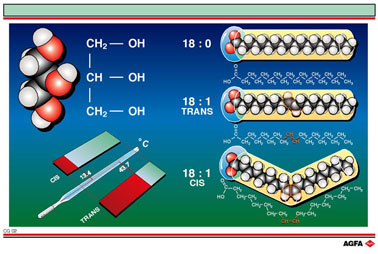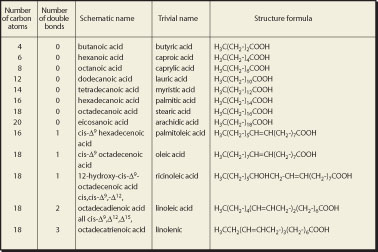CG02 Triglycerides: glycerol and fatty acids
| Aim:
To show the basic structures of triglycerides. To show the link
between the spatial structure and the properties of fatty acids. |
Lipids are apolar compounds that can be extracted from tissue using apolar solvents. The first group, the triglycerides, consists of triesters formed from glycerol and fatty acids. The most common fatty acids are carbonic acids with a chain length of 16 - 18 C atoms. These carbonic acids can be either saturated or unsaturated.
The
saturated fatty acids are linear molecules that can stack easily and therefore
solidify easily. As a result they have higher melting points. Unsaturated
fatty acids have a cis-configuration around the double bond. This inserts
a bend into the molecule which makes stacking more difficult, resulting
in lower melting points.
The molecules illustrated are octadecanoic acid,
trans - 9 - octadecenoic acid and
cis - 9 - octadecenoic acid.

